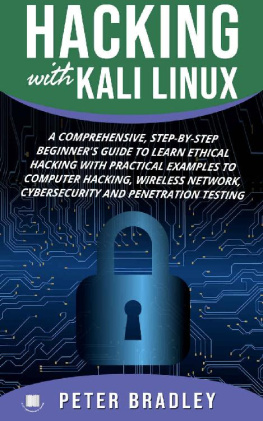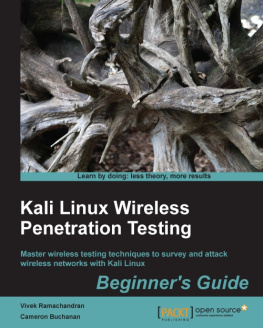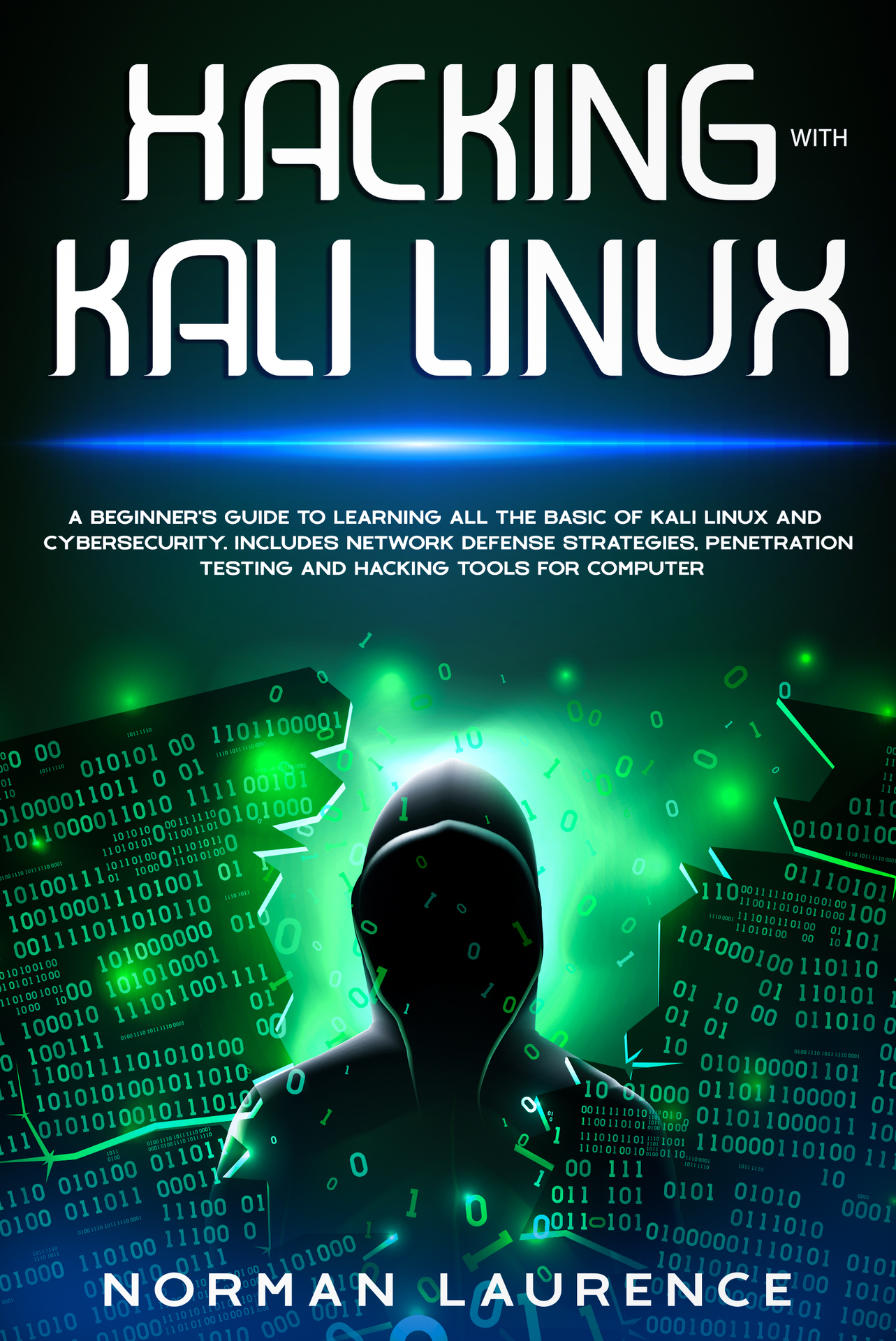Hacking with Kali Linux
A Beginners Guide to Learning All the Basics of Kali Linux and Cyber Security:
Includes Network Defense Strategies, Penetration Testing, and Hacking Tools for
Computer
Copyright 2019 - All rights reserved.
This content is provided with the sole purpose of providing relevant information on a specific topic for which every reasonable effort has been made to ensure that it is both accurate and reasonable. Nevertheless, by purchasing this content you consent to the fact that the author, as well as the publisher, are in no way experts on the topics contained herein, regardless of any claims as such that may be made within. As such, any suggestions or recommendations that are made within are done so purely for entertainment value. It is recommended that you always consult a professional prior to undertaking any of the advice or techniques discussed within.
This is a legally binding declaration that is considered both valid and fair by both the Committee of Publishers Association and the American Bar Association and should be considered as legally binding within the United States.
The reproduction, transmission, and duplication of any of the content found herein, including any specific or extended information will be done as an illegal act regardless of the end form the information ultimately takes. This includes copied versions of the work both physical, digital and audio unless express consent of the Publisher is provided beforehand. Any additional rights reserved.
Furthermore, the information that can be found within the pages described forthwith shall be considered both accurate and truthful when it comes to the recounting of facts. As such, any use, correct or incorrect, of the provided information will render the Publisher free of responsibility as to the actions taken outside of their direct purview. Regardless, there are zero scenarios where the original author or the Publisher can be deemed liable in any fashion for any damages or hardships that may result from any of the information discussed herein.
Additionally, the information in the following pages is intended only for informational purposes and should thus be thought of as universal. As befitting its nature, it is presented without assurance regarding its prolonged validity or interim quality. Trademarks that are mentioned are done without written consent and can in no way be considered an endorsement from the trademark holder.
Table of Contents
Description
Introduction
This book is not intended for the experienced hacker or the experienced Linux admin. Instead, it is intended for those who want to get started along the exciting path of hacking, cybersecurity, and pen testing. It is also intended not as a complete treatise on Linux or hacking, but rather a starting point into these worlds. It begins with the essentials of Linux and extends into some basic scripting in both bash and Python. Wherever appropriate, I have tried to use examples from the world of hacking to teach Linux principles.
In this introduction, well look at the growth of ethical hacking for information security, and Ill take you through the process of installing a virtual machine, so you can install Kali Linux on your system without disturbing the operating system you are already running.
Chapter 1: Brief Overview of Hacking
Hacking Definition
This is a process of identification of flaws that are present in a given network or computer systems that can be used to exploit its weaknesses to gain access.
An excellent hacking example is employing the use of a password cracking algorithm to secure entry into a system. In this age, computers are indispensable when it comes to running successful businesses. Additionally, computers need to be networked to be able to facilitate the exchange of communication with other external businesses. This means that isolated computer systems, on their own, are not enough. By networking them, it means that we are exposing them to the outside world, and thus making it possible for them to get hacked. Hacking essentially implies the use of computers to carry out malicious acts, for instance, stealing personal or corporate data, privacy invasion, fraud, and so on. Cybercrimes are known to cost organizations all around the world millions of dollars each year.
It is, therefore, prudent that businesses protect themselves against such attacks. Most of the hacking worldwide are carried out with criminal intent. This can range from committing some form of fraud to ruining the reputation of the targeted organization. Hackers can steal crucial data, embezzle funds, and even spread misleading or malicious information that can be detrimental socially. Hacking is a crime and is, in most jurisdictions, punishable by law. In spite of this, there is a form of hacking that is considered beneficial. This is done by professionals, government law agencies, and other accredited institutions. Primarily, they intend to counter the malevolent intent of malicious hackers. This way, it is possible to safeguard systems against harm. The protection and safety of the general society and its citizens can be achieved by this type of professional hacking, otherwise known as ethical hacking.
Common Hacker Attacks
The following are the most common types of hacker attacks against computers and networks.
- Denial of Service (DoS) Attack
A websites server can get overloaded when it is flooded by traffic more than it can handle. Picture this, a road designed to handle traffic from a small town can quickly get gridlocked when there is an influx of external traffic. The users will experience massive delays, and the inconvenience will be great. This is how a denial of service attack affect websites. The additional traffic on the site will make it impossible to provide service to visitors who are trying to access it.
A practical example is a newspapers website carrying breaking news. Many people will try to access it to find out more consequently overloading the site. In a DoS attack, however, the overloaded traffic is ordinarily malicious. The intention is to shut down the website from its legitimate users. A Distributed Denial-of-Service Attack (DDoS) is an attack carried out by many computers at the same time. It is challenging to cope with this type of attack since the IP addresses will appear to be originating from many different locations around the world simultaneously. This means that it is difficult to determine the source of attack by network administrators.
- Cross-Site Scripting (XSS)
An attacker can go after a vulnerable website in an SQL injection attack. Stored data can be targeted. For instance, sensitive financial data, user credentials, among others. A cross-site scripting attack is preferable to an attacker who would instead directly target a websites users. Just like an SQL injection attack, a cross-site scripting attack involves injecting malicious code into a site. The only difference is that the website itself is not being attacked. What happens is that a malicious attacker will carry out an injection on the users browser upon visiting the infected site. A common way to do this is by injecting the code which is malicious into a comment or a script that could automatically run. For instance, in JavaScript, a link can be embedded in a comment on a blog. This type of attack can, in essence, damage a websites reputation by risking users information without necessarily doing anything malicious. In some cases, sensitive information users transmit on the site can be hijacked through cross-site scripting before even the owners of the website realize that there is a problem.















